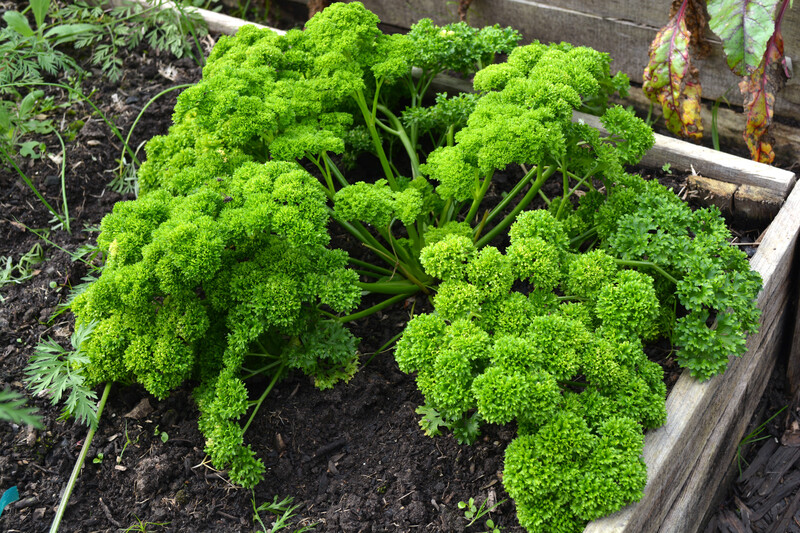Weather Warriors: Winter-Proof Your Garden Plants
Posted on 03/07/2025
Weather Warriors: Winter-Proof Your Garden Plants
As seasons shift and temperatures plummet, your beautiful garden becomes vulnerable to the harsh realities of winter. But with the right knowledge, tools, and proactive care, you can transform your plants into true weather warriors, ensuring your garden continues to thrive despite frost, snow, and cold winds.

Why Winter Protection Is Essential for Garden Plants
Winter can be a challenging season for gardeners. *Chilly air, frost, ice, and fluctuating temperatures* can stress, damage, or even kill unprotected plants. Some garden gems hibernate through winter, while others--especially tender perennials, young shrubs, and certain evergreens--require special attention to weatherproof them for the coldest months.
Effective winter-proofing doesn't just save plants; it preserves your investment, keeps your landscape visually appealing, and sets the stage for a healthy garden come spring.
Understanding Your Garden's Needs
Assess Your Climate and Microclimate
- Hardiness Zone: Always check your USDA Hardiness Zone to understand what plants will naturally withstand your region's winter.
- Microclimates: Notice warmer spots near your home, under trees, or against fences--these can protect plants from biting winds and deep freezes.
Identify Vulnerable Plants
- Newly planted trees and shrubs
- Tender perennials (e.g., Dahlias, Cannas)
- Container gardens and potted plants
- Herbs and leafy greens
- Late-blooming flowering plants
Consider creating a detailed garden inventory to help prioritize winter-protection efforts.
Strategies to Winter-Proof Your Garden Plants
1. Mulch: The First Line of Defense
Mulching is essential in winterizing garden plants. A thick, insulating layer of mulch shields the soil from temperature swings, retains moisture, and prevents root damage.
- Apply 2-4 inches of bark mulch, compost, or straw around the base of plants.
- Keep mulch a couple of inches away from plant stems to avoid rot.
- For sensitive bulbs, use leaves, pine needles, or shredded newspaper.
2. Protect Roots and Crowns
Roots are especially susceptible to winter's cold. Perennials with shallow root systems and newly planted shrubs benefit the most from extra protection.
- For potted plants, bury pots in garden beds or cluster them together against a sheltered wall.
- Raise containers off the ground to prevent waterlogged roots and freezing soil.
- Cover crowns with extra mulch or a frost blanket.
3. Use Cloches, Blankets, and Covers
When severe cold or frost threatens, physical barriers become your plants' shields.
- Row covers or horticultural fleece add several degrees of frost protection and can be easily draped over vegetables or flower beds.
- Cloche domes made from glass or plastic act as miniature greenhouses.
- Old sheets, burlap, or even cardboard boxes offer emergency protection on particularly chilly nights.
4. Water Wisely--But Don't Overdo It!
While most plants grow slowly in winter, proper watering helps prevent dehydration--especially before a hard freeze hits.
- Water deeply before the ground freezes so roots have ample moisture stored.
- Reduce watering schedules, but do not let soil dry out completely.
- Drain hoses, pots, and irrigation lines to prevent frost damage.
5. Combat Wind and Snow Damage
Cold winds wick moisture from leaves and stems, while heavy snow can break branches.
- Construct simple windbreaks using burlap, canvas, or garden fencing for vulnerable plants and evergreens.
- Gently brush off heavy, wet snow from branches to prevent breakage.
- Stake young trees firmly to keep them upright during winter storms.
Special Care for Different Plant Types
Winterizing Perennials
- After the first frost, cut back dead foliage to a few inches above ground.
- Dividing and transplanting perennials in late fall can give them time to survive winter and regrow vigorously in spring.
Mulch heavily around perennials that are only marginally hardy in your area; some varieties, like Hostas and Echinacea, benefit from extra winter-proofing.
Weatherproofing Shrubs and Trees
Young trees, evergreens, and broad-leafed shrubs like rhododendrons and camellias can suffer from winter burn and split bark.
- Wrap trunks with tree wrap or burlap to shield bark from sunscald and frost cracks.
- Spray anti-desiccant treatments to minimize moisture loss from leaves.
- Prune dead or damaged branches in the late fall to reduce stress on the plant during the winter.
Winterizing Vegetable Gardens
- Remove dead or diseased plant material to limit overwintering pests.
- Plant green manure or a cover crop (like winter rye) to protect and enrich the soil.
- Grow cold-hardy vegetables (e.g., kale, leeks, spinach) under row covers for an extended harvest season.
Overwintering Container Plants
Potted plants are especially vulnerable to freezing temperatures, as their roots are not protected by the earth.
- Move containers to sheltered locations (garages, sheds, enclosed porches).
- Insulate the pots by wrapping them in bubble wrap, burlap, or stuffed with straw.
- Ensure pots have drainage holes to avoid soggy, frozen soil.
Common Mistakes to Avoid When Winter-Proofing
- Waiting too long: Start preparing before first frost, not after!
- *Over-fertilizing in fall*: Avoid high-nitrogen fertilizers late in the season, which stimulate new, tender growth that is easily damaged by frost.
- Overwatering: Saturated soil can freeze, depriving roots of oxygen and causing rot.
- Neglecting pest control: Winter habitats can harbor unwanted insects; a tidy garden suffers less from pests come spring.
- Leaving covers on too long: Remove frost blankets as soon as warm weather returns to avoid overheating or smothering your plants.
Sustainable and Eco-Friendly Winterization Tips
- Use natural mulches (like *straw, shredded leaves, or pine needles*) that can be incorporated into the soil in spring.
- Repurpose old blankets, towels, or bed sheets as plant covers--save money and reduce waste.
- Turn fallen autumn leaves into leaf mold or compost for a double benefit: garden protection now and rich soil fertility later.
- Skip chemical deicers near garden beds to avoid contaminating your soil and local waterways.
When and How to Uncover and Revive Plants in Spring
Winter protection doesn't stop when the snow melts. Knowing *when and how to remove covers and mulch* ensures your weatherproofed plants make a seamless transition to the growing season.
- Uncover plants gradually as temperatures consistently rise above freezing.
- Thin mulch layers to allow new shoots to emerge, but keep some as late frosts may still threaten in early spring.
- Prune away winter-damaged stems to encourage healthy regrowth.
- Resume regular watering and fertilizing schedules as roots awaken and growth resumes.

Frequently Asked Questions about Winterizing Garden Plants
Can I use plastic to cover my garden plants in winter?
While plastic can offer temporary frost protection, it is not breathable and may trap moisture, encouraging rot. Use breathable fabrics like burlap, horticultural fleece, or old cotton sheets instead for best results.
Do all perennials need to be cut back before winter?
Not necessarily. Some perennials (such as ornamental grasses and certain wildflowers) provide shelter for beneficial insects and add winter beauty to your garden. Cut back those prone to harboring disease or that flop unattractively in snow.
How late in the fall can I mulch my garden?
*Mulch is best applied after the first hard frost* but before the ground freezes solid. This timing insulates roots but prevents rodents from nesting in still-warm mulch over winter.
What's the best way to protect young trees?
Wrap trunks with tree guards and provide a ring of mulch around the base--without touching the trunk--to insulate roots and prevent sunscald, rodent damage, and crack formation from temperature fluctuations.
What about houseplants and tropicals left outside?
Bring all non-hardy houseplants and tropicals indoors before nighttime temperatures drop below 50?F (10?C). Acclimate them gradually to indoor conditions to prevent shock.
Conclusion: Be a Garden Weather Warrior This Winter
*Winter-proofing your garden plants* is an investment in your landscape's beauty and health. By understanding your garden's vulnerabilities and applying targeted, eco-friendly strategies, you make your plants hardy enough to withstand the worst of winter--and bounce back stronger when warmer weather returns.
So don't wait until the bitter cold arrives. Take action now and become one of the dedicated weather warriors who brave the elements to protect their cherished garden plants all winter long. Your future spring garden will reward you with lush growth, vibrant blooms, and the satisfaction of having outsmarted Old Man Winter himself.
Ready to Start? Your Winter Garden Checklist:
- Assess plant vulnerabilities and create your protection plan.
- Stock up on mulch, covers, and sustainable supplies.
- Water and tidy your garden before severe cold arrives.
- Monitor weather forecasts and be ready to act quickly during cold snaps.
With these methods, tips, and sustainable solutions, your garden can be more resilient than ever. Become a true *weather warrior* and keep your garden thriving every season--no matter what winter brings!

